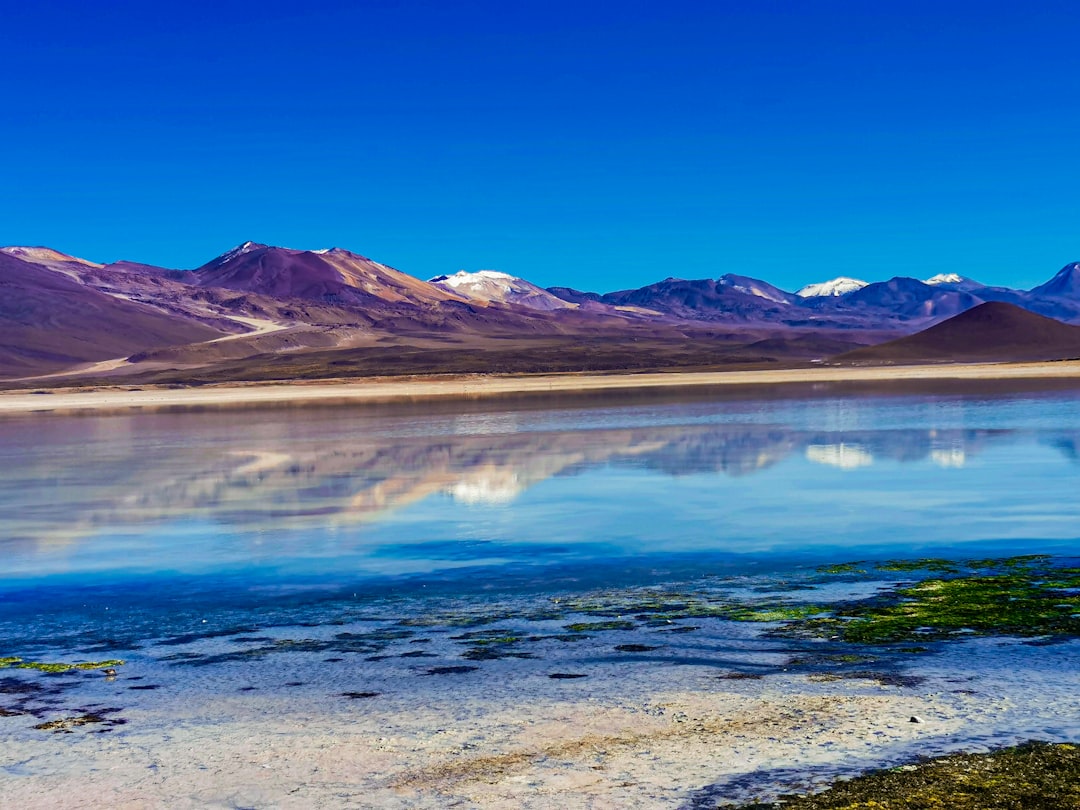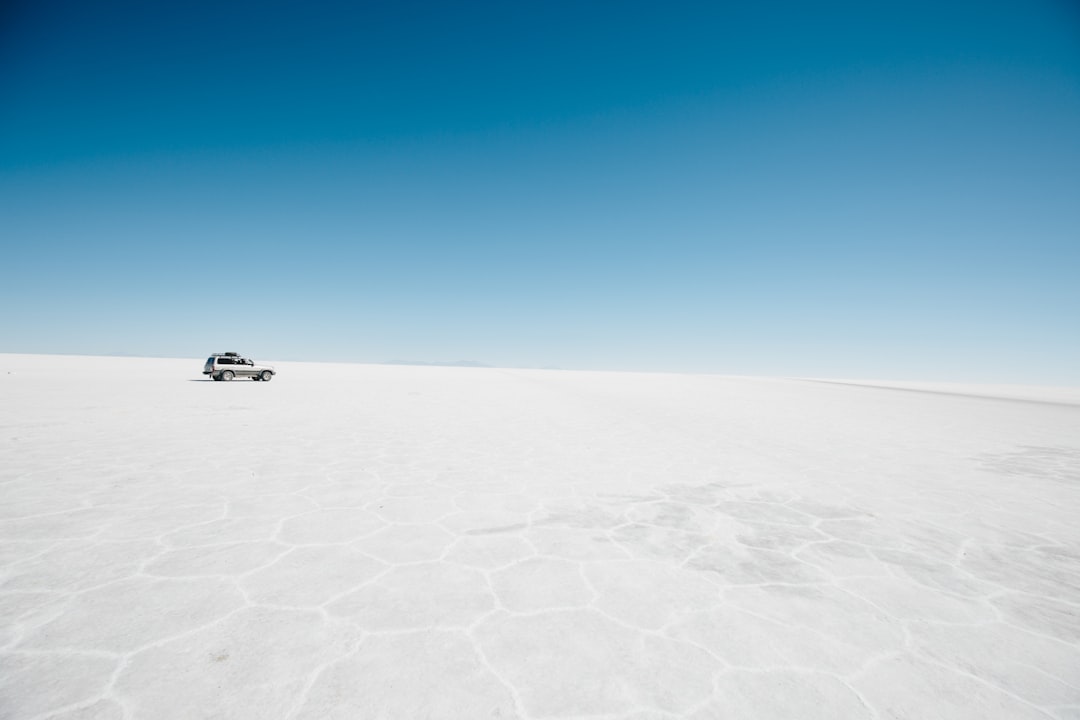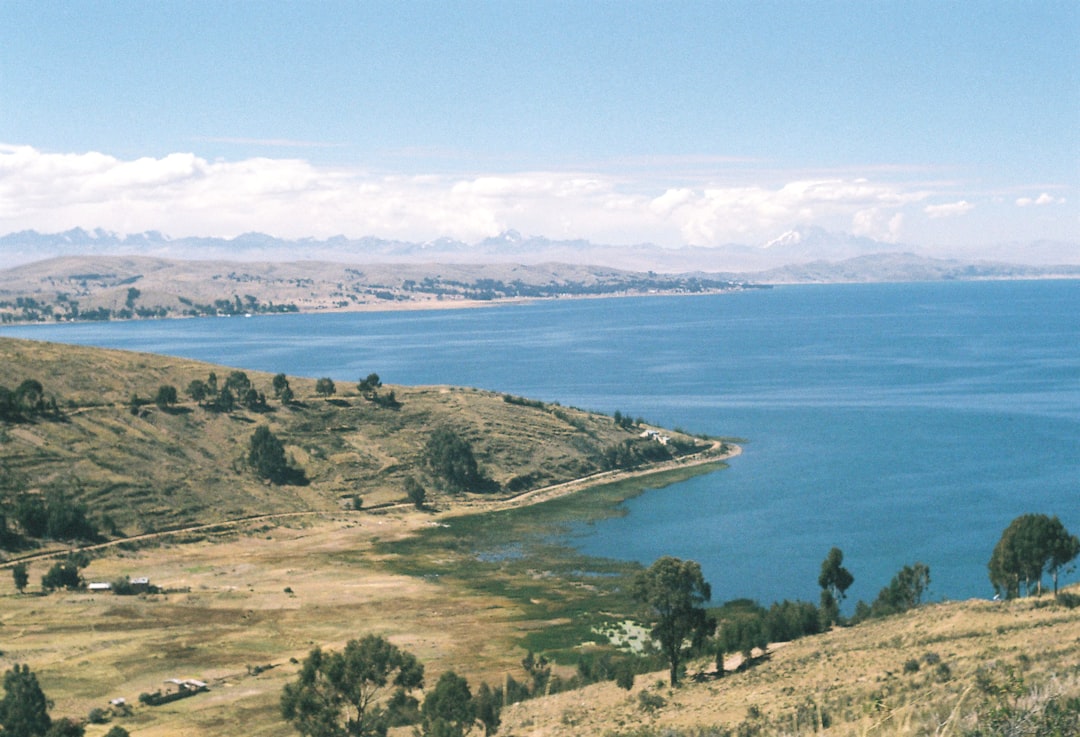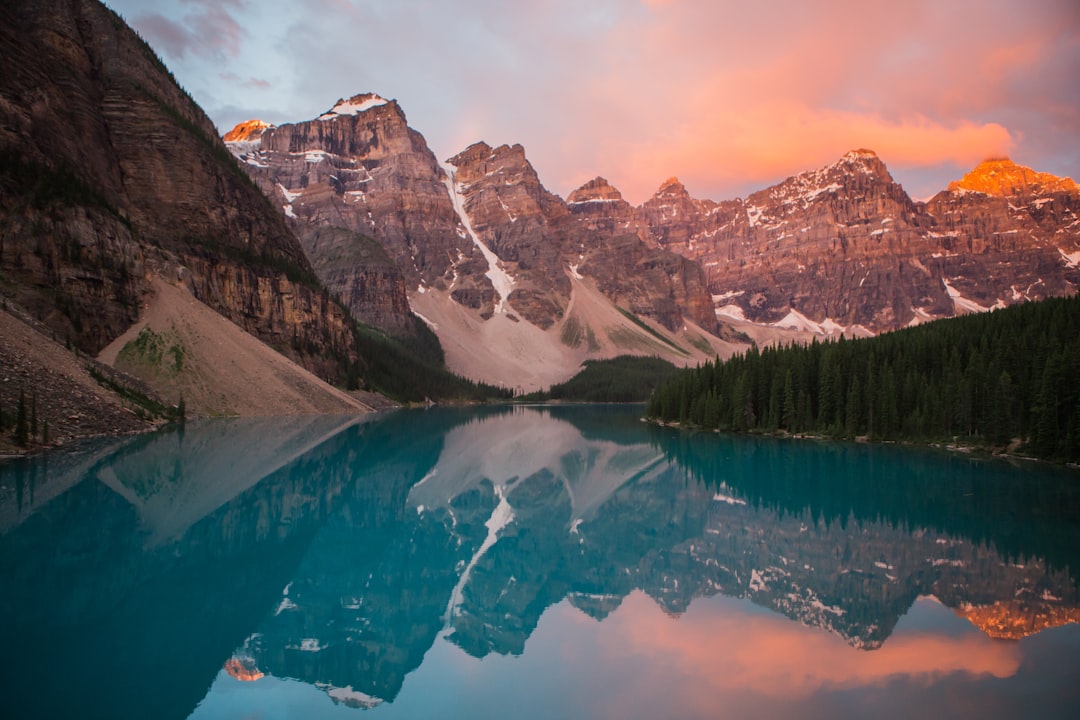7 Unforgettable Experiences for Families Exploring the Diverse Wonders of Bolivia
7 Unforgettable Experiences for Families Exploring the Diverse Wonders of Bolivia - Exploring Bolivia's Natural Wonders
Bolivia's natural treasures, including the Salar de Uyuni, the world's largest salt flat, and the Andean peaks, make it a destination that leaves visitors in awe of nature's magnificence.
Bolivia is home to the world's highest navigable lake, Lake Titicaca, which sits at an astounding elevation of over 12,500 feet (3,800 meters) above sea level.
The Salar de Uyuni, the world's largest salt flat, covers an area of over 4,000 square miles (10,500 sq km) and can be seen from space, appearing as a dazzling white expanse.
Laguna Colorada, a striking red-colored lake in the Andes, gets its vibrant hue from the high concentration of red algae and minerals in the water.
The Yungas region, often referred to as the "death road," features a narrow, winding road carved into the side of a mountain, making it one of the most treacherous yet scenic drives in the world.
Bolivia is home to the Incallajta archaeological site, a lesser-known Inca ruin that showcases the empire's impressive engineering feats, including elaborate irrigation systems and precise stone masonry.
The Cotapata National Park is a biodiversity hotspot, home to over 1,000 species of plants, including many endemic and endangered species, as well as a diverse array of wildlife such as the Andean spectacled bear.
7 Unforgettable Experiences for Families Exploring the Diverse Wonders of Bolivia - Discovering Indigenous Cultural Traditions
Exploring Bolivia's diverse cultural heritage offers families a unique opportunity to connect with the country's Indigenous communities and traditions.
Bolivia is home to over 36 distinct indigenous ethnicities, making it one of the most culturally diverse countries in South America.
These groups, including the Quechua, Aymara, and Guarani, have maintained strong connections to their traditional practices and beliefs.
The Aymara people, who primarily reside in the Andean highlands, have a unique understanding of time, viewing it as a cyclical concept rather than a linear progression.
This perspective is reflected in their language and cultural traditions.
Indigenous Bolivian communities are known for their vibrant textiles, which often feature intricate geometric patterns and symbolism.
These textiles are not only aesthetically pleasing but also serve as a means of cultural expression and identity preservation.
The Guarani people, who inhabit the eastern regions of Bolivia, have a deep connection to the natural world and are known for their traditional healing practices using medicinal plants found in the Amazon rainforest.
Many Bolivian indigenous communities maintain a rich oral tradition, passing down their histories, legends, and creation stories through storytelling and song.
These narratives offer valuable insights into their worldviews and beliefs.
They are known for their traditional boat-building techniques and fishing practices, which have been passed down for generations.
Exploring the remnants of this ancient culture provides a window into the ingenuity and sophistication of Bolivian indigenous peoples.
7 Unforgettable Experiences for Families Exploring the Diverse Wonders of Bolivia - Adrenaline-Filled Family Adventures
Bolivia offers thrilling adventures for families, with opportunities to explore the country's diverse landscapes through activities like rafting, kayaking, and even bungee jumping.
The Salar de Uyuni, the world's largest salt flat, hosts an annual "salt marathon" where runners compete on the dazzling white expanse, with the reflection of the sky creating the illusion of running on water.
Families can experience the thrill of ziplining over the stunning Lake Titicaca, the world's highest navigable lake, with some lines stretching over a mile long and reaching speeds of up to 60 mph.
The Cotapata National Park is home to the Andean condor, the world's largest flying bird, which has a wingspan that can reach up to 10 feet (3 meters), providing an awe-inspiring sight for families exploring the park.
Bolivia's Laguna Colorada, a striking red-colored lake, is fed by mineral-rich geothermal springs, creating a unique and otherworldly landscape perfect for adventurous families to explore.
The Incallajta archaeological site, a lesser-known Inca ruin, features a series of underground tunnels and chambers that visitors can navigate, offering a thrilling, Indiana Jones-like experience for families.
Families can embark on heart-pumping river rafting adventures on the Beni River, which runs through the Amazon rainforest, encountering Class III and IV rapids amidst the lush, biodiverse surroundings.
7 Unforgettable Experiences for Families Exploring the Diverse Wonders of Bolivia - Iconic Landscapes - Moon Valley and Uyuni Salt Flats
Complementing the salt flats, the Moon Valley in the Altiplano region offers equally breathtaking scenery, with towering rock formations resembling a lunar landscape.
The Uyuni Salt Flats in Bolivia are so vast that they can be seen from space, appearing as a dazzling white expanse covering an area of over 4,000 square miles (10,500 sq km).
During the rainy season, the salt flats transform into a massive mirror, reflecting the sky and creating an otherworldly, surreal landscape that has been a source of inspiration for many artists and photographers.
The Uyuni Salt Flats are home to a unique species of cactus that has adapted to the harsh conditions, growing up to 50 feet (15 meters) tall and surviving the intense UV radiation and extreme temperatures of the region.
Beneath the Uyuni Salt Flats lies a massive reserve of lithium, estimated to be the world's largest, with the potential to meet a significant portion of the global demand for this crucial element in battery technology.
The salt flats are home to the rare and elusive James's Flamingo, a species that has adapted to thrive in the saline environment and can often be spotted feeding on the brine shrimp that inhabit the shallow pools.
The Uyuni Salt Flats were once the site of a prehistoric lake, and archaeologists have discovered fossilized remains of ancient megafauna, including giant sloths and sabre-toothed cats, providing a glimpse into the region's distant past.
The harsh, barren landscape of the Moon Valley has made it a popular filming location for science fiction and post-apocalyptic movies, with its otherworldly appearance standing in for alien planets or desolate, futuristic settings.
Visitors to the Uyuni Salt Flats can participate in the annual "salt marathon," a unique running event that takes place on the dazzling white expanse, with the reflection of the sky creating an illusion of running on water.
7 Unforgettable Experiences for Families Exploring the Diverse Wonders of Bolivia - Navigating Lake Titicaca's Pristine Waters
Lake Titicaca, the highest navigable lake in the world, offers families a unique opportunity to explore the rich cultural heritage and stunning natural beauty of the Andean region.
The serene waters of Lake Titicaca, combined with the diverse indigenous communities that call it home, make it a truly unforgettable destination for families exploring the wonders of Bolivia.
Lake Titicaca is the highest navigable lake in the world, sitting at an elevation of 3,812 meters (12,507 feet) above sea level, making it a true engineering marvel.
The lake is home to the Uros people, who have lived on floating islands made entirely of totora reeds for centuries, showcasing their exceptional ingenuity and adaptability to the unique environment.
Lake Titicaca is believed to be over one million years old, making it one of the oldest lakes in the world and a true geological wonder.
The lake's single outlet, the Desaguadero River, flows into Bolivia, offering visitors the opportunity to explore the serene and less-visited cultural sites along its banks.
Taquile Island, located within Lake Titicaca, is known for its intricate textile traditions, with the islanders' knitting skills recognized as a UNESCO Intangible Cultural Heritage.
Isla del Sol, or "Island of the Sun," is revered as the birthplace of the Inca civilization, and its archaeological sites provide a fascinating glimpse into the region's rich history.
The lake's high-altitude location means that the air pressure is significantly lower, making it a unique challenge for visitors to adjust to the reduced oxygen levels.
Lake Titicaca's water level has been fluctuating in recent years, raising concerns about the potential impact of climate change on this fragile ecosystem and the communities that depend on it.
Visitors can take a thrilling zip-line ride over the pristine waters of Lake Titicaca, offering an adrenaline-fueled way to experience the majestic landscape from a different perspective.
The lake's diverse ecosystem supports a wide range of flora and fauna, including the endangered Titicaca water frog, which can grow up to 20 centimeters in length and is found nowhere else in the world.
7 Unforgettable Experiences for Families Exploring the Diverse Wonders of Bolivia - Immersing in Bolivia's Andean Heritage
Bolivia's diverse wonders offer families a unique opportunity to explore the country's rich Andean heritage.
From the surreal beauty of the Uyuni Salt Flats to the vibrant cultural traditions of indigenous communities, Bolivia promises unforgettable experiences.
Adventurous families can embark on thrilling activities like ziplining over Lake Titicaca, while also immersing themselves in the country's ancient history and natural marvels, such as the Incallajta archaeological site and the Cotapata National Park.
The Aymara people of Bolivia have a unique perspective on time, viewing it as a cyclical concept rather than a linear progression, which is reflected in their language and cultural traditions.
Bolivia is home to over 1,000 species of plants in the Cotapata National Park, including many endemic and endangered species, making it a true biodiversity hotspot.
The Salar de Uyuni, the world's largest salt flat, covers an area over 4,000 square miles (10,500 sq km) and can be seen from space, appearing as a dazzling white expanse.
Beneath the Uyuni Salt Flats lies a massive reserve of lithium, estimated to be the world's largest, with the potential to meet a significant portion of the global demand for this crucial element in battery technology.
The Incallajta archaeological site, a lesser-known Inca ruin, features a series of underground tunnels and chambers that visitors can navigate, offering a thrilling, Indiana Jones-like experience.
The Guarani people of eastern Bolivia are known for their traditional healing practices using medicinal plants found in the Amazon rainforest, showcasing their deep connection to the natural world.
The Yungas region, often referred to as the "death road," features a narrow, winding road carved into the side of a mountain, making it one of the most treacherous yet scenic drives in the world.
The Uyuni Salt Flats are home to a unique species of cactus that has adapted to the harsh conditions, growing up to 50 feet (15 meters) tall and surviving the intense UV radiation and extreme temperatures of the region.
Beneath the Uyuni Salt Flats, archaeologists have discovered fossilized remains of ancient megafauna, including giant sloths and sabre-toothed cats, providing a glimpse into the region's distant past.
Lake Titicaca, the highest navigable lake in the world, is believed to be over one million years old, making it one of the oldest lakes in the world and a true geological wonder.
The Taquile Island within Lake Titicaca is known for its intricate textile traditions, with the islanders' knitting skills recognized as a UNESCO Intangible Cultural Heritage.
7 Unforgettable Experiences for Families Exploring the Diverse Wonders of Bolivia - Hands-on Learning About Conservation and Sustainability
Families exploring the diverse wonders of Bolivia can now engage in unforgettable hands-on experiences that combine education and adventure.
Additionally, the Children's Eco-Village in Cochabamba provides hands-on learning experiences on permaculture, renewable energy, and waste management.
The Madidi National Park in Bolivia is home to over 1,000 species of birds, making it one of the most biodiverse regions in the world.
The community-based tourism initiative in the Isiboro Secure National Park and Indigenous Territory (TIPNIS) allows families to learn about indigenous conservation practices firsthand.
The city of La Paz has implemented innovative sustainability measures, such as the use of electric minibuses, providing a unique opportunity to observe urban sustainability in action.
The Children's Eco-Village in Cochabamba offers hands-on experiences in permaculture, renewable energy, and waste management, inspiring the next generation of environmental stewards.
The Kaa-Iya del Gran Chaco National Park is the largest protected area in Bolivia, offering families a chance to learn about wildlife conservation efforts in this biodiverse region.
Families can participate in reforestation projects in the Bolivian Amazon, directly contributing to conservation efforts and understanding the importance of forest restoration.
Glacier trekking and environmental education activities in the Sajama National Park provide a unique platform to learn about the impacts of climate change on Bolivia's glacial landscapes.
The Salar de Uyuni, the world's largest salt flat, is home to a unique species of cactus that has adapted to the harsh, saline environment, showcasing the resilience of life in extreme conditions.
Beneath the Uyuni Salt Flats lies a massive reserve of lithium, estimated to be the world's largest, with the potential to meet a significant portion of the global demand for this crucial element in battery technology.
The Incallajta archaeological site features a series of underground tunnels and chambers, offering families a thrilling, hands-on exploration of the Inca's engineering prowess and environmental adaptations.
The Taquile Island within Lake Titicaca is recognized by UNESCO for its intricate textile traditions, showcasing the cultural heritage and sustainability of indigenous craftsmanship.



